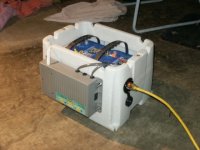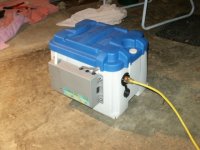It is difficult to get the "static balance" of the boats perfect--because of differing amounts of fuel, water, gear an persons.
The Optima batteries will work fine in your application--and probably are a good choice. What I do see is that people occasionally buy too small a battery for house banks. The C Dory has modest demands, and a couple of group 24's (unles you have refigeration and want to stay at anchor for several days) is fine.
Although it is recommended to not mix sizes, ages and types of batteries, at times it becomes the logical way to go considering wiring and economics.
The checking the battery voltage, as you do, and never discharging more than 50% (12.2 volts resting) wi Comll prolong the life. There are mixed results with Optima batteries. If you read "The Hull Truth" there are a number of problems which are reported. However, one rarely finds out how well the battery was maintained (not too deeply discharged, not allowed to sit discharged, fully charged etc).
Also remember that numbers like "group 24 or 30" are case size. In that case size there are different capacities--and that often relates directly to the weight of the battery. For example, the largest blue top, dual battery by Optima D 35, weight is 43.5 lbs, it has cranking amps of 875 and Capacity of 55 amp hours. Compare to the Group 31 AGM battery which weighs 70 lbs, has cranking amps of 1000, Capacity of 105 amp hours.
If you are using the charging for gel batteries, rather than AGM batteries, it is possiable that you are under charging the battery. (The reason I put down the specifics for the gel cell vs the AGM battery). Unfortunately the language used causes confusion. The voltages for an Optima are the same as an AGM battery, and can be used on standard outboards and cars, where as the gel cell battery cannot be safely charged at over 14 to 14.1 volts. Check the voltage as the battery is being charged.


